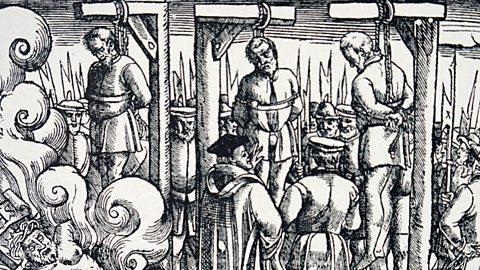The purpose of punishment in public over time
Until the mid-19th century, punishments were carried out in full view of the public. Executions took place on public gallows in the middle of towns and cities, and often attracted crowds of hundreds of onlookers.
Public punishment allowed the whole community to take revenge on the criminal, and see that the victims had been given retribution. They also acted as a deterrent. Allowing the public to see the agony, pain, or humiliation of the criminal was thought to be an effective way to deter people from committing the crime.
Public punishments in the 16th and 17th centuries
Between 1500 and 1700, nearly all punishments took place in public, such as vagrants being whipped back to their homes, and petty criminals being placed in stocks and pillories.

Public punishments in the 18th and 19th centuries
Punishment in public continued through the 1700s, however, it gradually became less common. A Royal Commission on Capital Punishment (1864) concluded that executions should no longer be done publicly.
- Huge crowds were attending executions. These provided more opportunities for crimes such as pickpocketing. The crowds were often difficult to control.
- The crowds were seeing the execution as a form of entertainment. The Government started to see that public executions were no longer having the effect of deterrence.
- The publicity of executions sometimes made the criminal famous and appear heroic.
Other forms of public punishment also stopped in the 19th century. floggingA punishment that involves a public beating, usually with a flexible stick. was carried out inside prisons. The stocks and pillory were no longer used.
Public punishments in the 20th and 21st centuries
These days, community service is the only punishment carried out in public. In December 2008, the Home Secretary, Jack Straw, introduced the wearing of high visibility vests as a response to public pressure to make punishment more visible.
However, the media also provide a vehicle for public humiliation as they can report on punishments handed down by the courts. Local papers often report on recent sentences that have been passed, whereas national papers have been known to publish multiple images of celebrities who have been sentenced to community service.